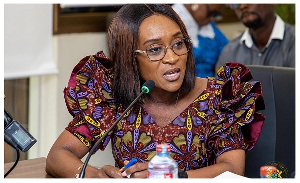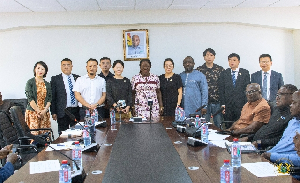Asks Prince Dornu-Leiku
Many years after it was built, the Koforidua stadium still lacks all basic amenities befitting any edifice of its stature. Apart from a well-grassed playing field, there is nothing to talk about in terms of infrastructure and equipment. It is therefore worth asking why the taxpayer’s money was invested in building the facility in the first place.
A four room building is the only infrastructure within the confines of the stadium, of which two apparently serve as dressing rooms for each team, another for match officials and the other for press conferences. Amid the rooms are so small, one wonders how many members of the press can be accommodated for any press conferences in there. And to talk of the dressing rooms for the teams, can the players really have spaces to breath yet listen to a coach’s instructions? Power FC, Maxbees and even Dawu Youngsters all used the Koforidua stadium as their home venue during their days in the Ghana Premier League and all others, Hearts of Oak, Asante Kotoko included apparently used the same dressing rooms. Some professional league indeed.
Add to that a brick scoreboard, apparently donated by a patriotic citizen called Opanyin Ayeh, and you won’t find any more facilities at the Koforidua Sports Stadium. No. None. There are no stands, no seats, nothing. The only evidence of any attempts at getting stands or seats is a set of concrete pillars erected in a little part of the stadium which have remained in their early stages since work started over ten years ago.
No. No basketball nor volleyball courts, no facilities for indoor sports as table tennis, badminton, even tennis, not to say amateur boxing, athletics’ tartan tracks can hardly be visible. Well even the Ohene Djan Stadium in Accra, the nation’s supposed Wembley, lack many of such facilities, equipment and infrastructure for other so-called lesser known sports. But the Ohene Djan is not the only stadium in the capital.
There is still the El-Wak Park not to talk of the many other private and public institutions that have many of such facilities, equipment and infrastructure. Is it the same situation in Koforidua? Certainly not. So the stadium must be the biggest venue for any sporting developments in the Eastern Regional capital. But sadly that can hardly be the case with the state of the stadium.
Just outside the gates of the Koforidua stadium is the supposed “Stadium Canteen” which can hardly rank near what should be its real status. Worst of all, the stadium lacks basic amenities like water, electricity and places of convenience. So it has come to mean that anyone planning any big event in Koforidua which the stadium naturally should be the ideal venue for must start looking elsewhere or raise huge finances for hiring of canopies, chairs, even water, electricity too, erect own volleyball and basketball courts, amid do a whole lot.
Such is the bad state of the lack of facilities that inter-schools competitions and programmes which must take place at the stadium usually end up elsewhere to avoid the many embarrassments that the Koforidua stadium could bring to their organisation. According to Emmanuela Wilson, a student in Koforidua, lack of rooms for participants to use during a recent programme at the Koforidua Sports Stadium for schools in the Eastern Region meant the event ended in lots of confusion. “We had this cultural programme and the schools were many but we couldn’t get a place to change ourselves for another performance. It was very embarrassing as many girls and boys had to change in the open. It is very bad the situation of the stadium and there is also no water, it is not good at all,” Emmanuela explained to the writer during a recent visit to the stadium for this story.
Many other individuals expressed same reservations about the poor state of the stadium. A senior officer at the National Sports Council’s Eastern Regional offices reiterated the same complaints on stadium’s bad conditions. According to the officer, the Sports Council stood to make several financial gains should facilities and infrastructure at the stadium improve. “Many programmes originally scheduled for the stadium often end up being called off because of the difficulties organisers encounter. The stadium is there to help promote sports and unearth many potential future stars in the various sporting disciplines,” explained the officer who will not reveal his identity. He added: “But what does not help us financially is the loss of opportunities to make money that will be accrued from hiring of the stadium or even patronizing of matches and other sports events. If we get such money, it will help fund many sports development projects in the Region.”
And that certainly is no false statement. The Eastern Region has produced many great sports stars for Ghana over the years in many sporting disciplines. So what they need is encouragement and motivation to achieve much more. Definitely there can be no better starting point than building and provision of the necessary facilities to aid sports development in the Eastern Region. Ghanaians remember very well the promise by then President Kufuor to have stadiums of modern standards built at least in every region sometime ago. Mr. Kufuor was speaking after going round to commission refurbished and newly-built stadiums as Ghana got ready to host CAN 2008. But the big question is do we still have that menu on our national agenda?
Those ultra-modern stadiums in Accra, Kumasi, Tamale and Sekondi-Takoradi have since been followed by other goods one in other Regional capitals as Sunyani, Cape Coast. Wa All Stars also use a very good stadium in the Upper West Regional capital. What is happening in other regions like Volta and the Upper East Region will only become too aware very soon.
But what the journey to Koforidua and back has revealed is that we have lots of work to do to raise the Eastern Region’s major sporting edifice to true modern standards. Members of Parliament, Ministers, corporate executives, chiefs and people from the region must all put in a contribution in developing the Koforidua Sports Stadium.
Sports Features of Saturday, 5 September 2009
Source: Prince Dornu-Leiku / Daily Dispatch












